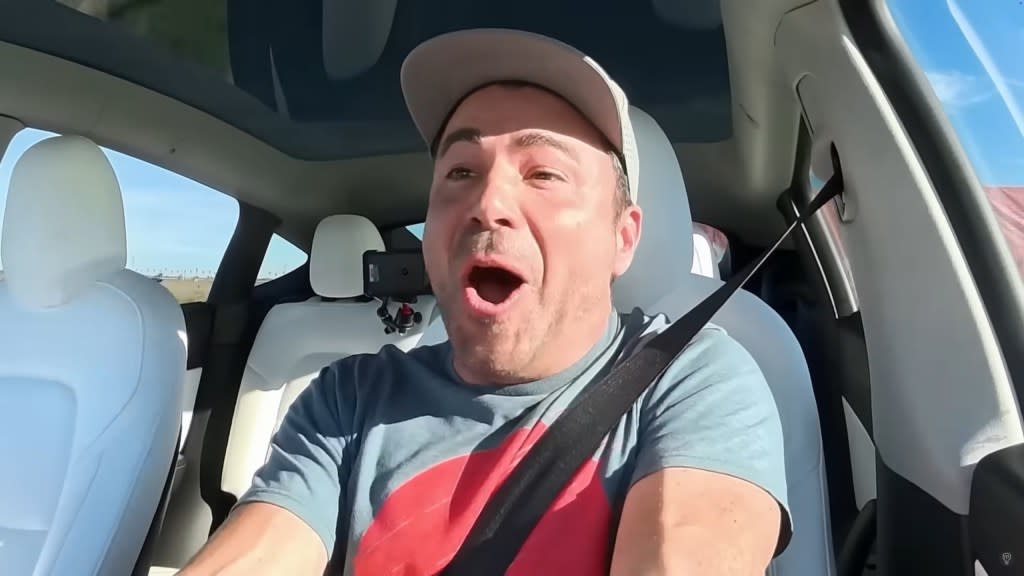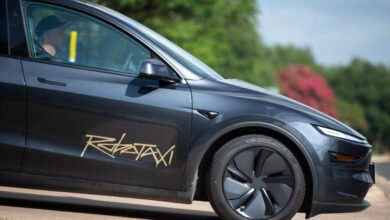Can You Fool a Self-Driving Car? Mark Rober Pits Tech Against the Impossible (and Maps Disney’s Dark Rides!)
▼ Summary
– Mark Rober tested Tesla’s autopilot, which uses cameras, against LiDAR-equipped systems, highlighting LiDAR’s superior performance in challenging visibility conditions like fog, rain, and visual illusions.
– LiDAR successfully created a 3D model of Space Mountain in complete darkness, demonstrating its precise mapping capabilities, fulfilling Rober’s childhood dream.
– In tests, both systems detected and stopped for pedestrians, but LiDAR outperformed Tesla’s autopilot in poor visibility, with Tesla failing to recognize a painted fake wall.
– Rober faced backlash for allegedly misleading viewers, with critics pointing out Tesla’s autopilot disengagement before hitting the wall and questioning the fairness of the technology comparison.
– Rober responded by clarifying test conditions, confirming no financial ties to Luminar, and expressing confidence in the integrity of his results, emphasizing the video’s focus on data presentation.
Mark Rober set out on an intriguing mission with a dual purpose: to test the limits of different self-driving car technologies and to finally fulfill a 30-year-old childhood dream of mapping the famously dark Space Mountain ride at Disneyland. The core question driving the car tests was whether Tesla’s autopilot system, which relies solely on simple cameras, could be tricked compared to more advanced systems that use LiDAR.
The Space Mountain mission served as a unique test case for the technology. Since the ride is in near total darkness, traditional cameras are useless. The solution was using a small, portable LiDAR scanner, which stands for Light Detection and Ranging. This technology works by shooting out laser pulses and measuring the time it takes for them to return after hitting an object, allowing it to precisely calculate distance and map surroundings, even in pitch black conditions. Mark undertook a “3-step undercover operation” to get the tech into Disneyland past security and sneak it onto the ride. Despite the risks, the mission was successful, and the LiDAR data was processed to create a tabletop 3D model of the Space Mountain track, revealing its layout for the first time. This same laser mapping technology is used in some cars.
This led to the main event: a head-to-head comparison between a LiDAR-equipped car and a Tesla on autopilot, which uses only cameras and image processing. All tests were conducted at a speed of 40 miles per hour. Mark chose to use the Tesla’s autopilot system for the main tests because, while it might have more “phantom braking,” it’s considered less likely to result in serious accidents compared to the automatic emergency braking system alone, which assumes the driver is fully attentive.

Here’s a summary of some key tests:
- Pedestrian Tests (Standing/Dashing Kid): In initial tests involving a child mannequin standing or dashing into the road, both the LiDAR car and the Tesla on autopilot were able to detect the obstacle and stop in time.
- Visibility Challenges (Fog, Rain, Blinding Lights): When faced with thick fog, torrential rain, or blinding lights, the LiDAR system generally performed better, successfully detecting the obstacle and stopping. The Tesla’s camera system struggled more in these conditions, failing to detect the mannequin in fog and rain.
- The Painted Wall: The ultimate test involved a Wile E Coyote-style fake wall painted on a flat surface. While a human brain can recognize this is not a real wall, the LiDAR car easily detected it as a solid object and stopped with no issue. The critical question was if the Tesla’s cameras would be fooled. As the Tesla accelerated towards the wall, its optical system did not detect the fake wall in time, and the car “absolutely smashed through” it without any braking.
The experiment provided clear data. While camera-based systems like Tesla’s autopilot can be impressive in certain scenarios, LiDAR demonstrated superior capability in challenging visibility conditions and against visual illusions like the painted wall. On a more personal note, the decades-old mystery of Space Mountain’s layout was finally solved thanks to the same innovative engineering technology. Mark highlighted the power of engineering to solve problems and even achieve ambitious personal goals, mentioning resources like the CrunchLabs Hack Pack for those interested in learning to build and create.

Mark Rober Tesla Controversy and Response
Okay, here is a shorter version of the update based on the provided sources:
Following Mark Rober’s popular YouTube video “can you fool a self-driving car,” which showed a Tesla on Autopilot hitting a dummy in fog/water and driving through a painted wall, significant backlash arose, accusing Rober of misleading viewers. Critics highlighted that the Tesla’s Autopilot indicator seemed to disengage moments before hitting the wall. They also argued that comparing Luminar’s Lidar technology to Tesla’s Autopilot was unfair, suggesting the newer Full Self-Driving (FSD) should have been tested. Some outlets like Forbes stated that testing the older Autopilot made the video “fairly meaningless”. Luminar’s role was questioned as they provided the car for Lidar testing, and their stock increased while Tesla’s dropped after the video, leading to speculation about financial motivations and even talk of a potential lawsuit against Rober. Allegations also surfaced about multiple takes of the wall test being used.
Mark Rober responded to these criticisms:
- Autopilot Disengagement: Rober posted raw footage confirming Autopilot disengaged “17 frames before hitting the wall,” less than half a second. He stated his feet were not on the pedals and he wasn’t pulling the steering wheel, hypothesizing ultrasonic sensors might disengage it, but believing the outcome wouldn’t have changed.
- Autopilot vs. FSD: He used Autopilot as his understanding was FSD required an address, making Autopilot easier to engage. He stated he believes the sensor system is the same for detecting the wall in both, calling it a “distinction without a difference,” and is confident FSD wouldn’t yield a different result, though he’d rerun the test.
- Multiple Takes: Rober confirmed two takes of the wall test. The first used vinyl that tore, and a second, later take used a styrofoam wall for visual effect, which is the raw clip he posted online.
- Luminar’s Role: He clarified Luminar provided the car but gave no money, had no say in the edit, and did not approach him; he reached out to borrow cars. He stated he was impartial and would have shown Luminar failing or Tesla passing if that happened. He guessed Luminar removed the link to his video from their site to respect his instruction not to use it for marketing.
- Financial Motivation: Rober explicitly stated he does not own any Luminar stock, knows no one close who does, and has no options or puts on Tesla stock, declaring “no Financial anything in here at all at all 100%”.
- Potential Lawsuit: He expressed no concern, stating he has “nothing to hide” and “no alterior motive”.
Rober reiterated he enjoys his Tesla and is focused on presenting data, stating the video was planned long in advance. He doesn’t believe the results mean Tesla’s self-driving is terrible and noted anyone could easily recreate the test.




